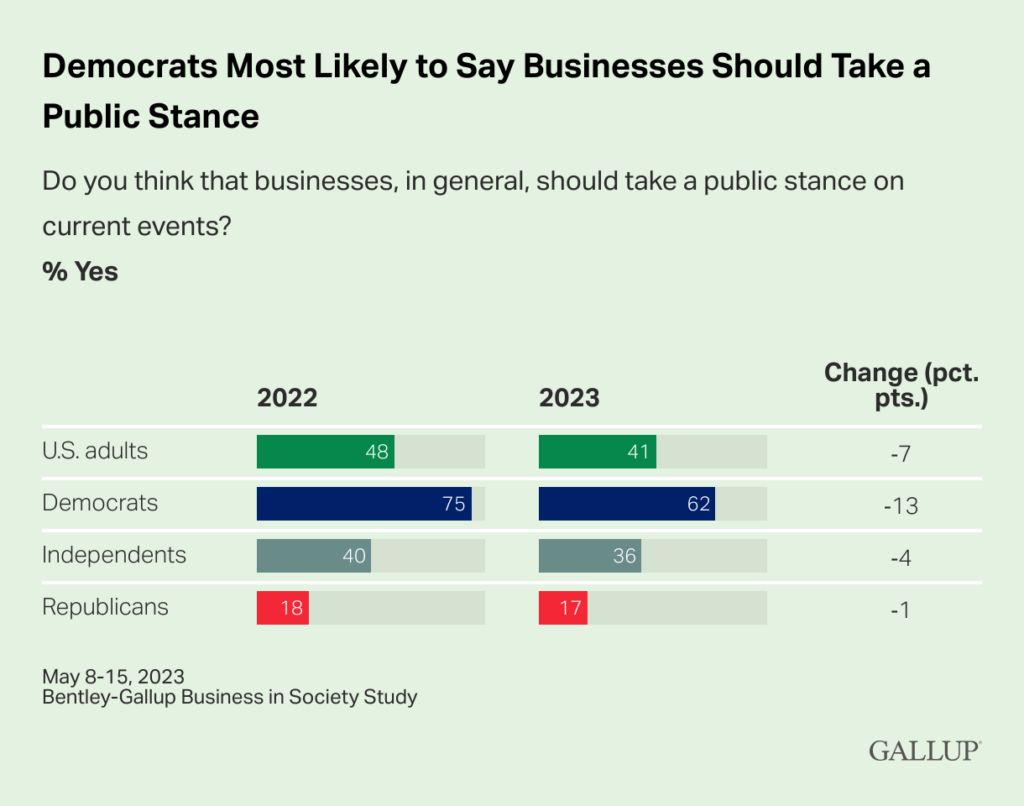In their 2021 book Brandsplaining, Jane Cunningham and Philippa Roberts dig into how advertisers traditionally have viewed and judged women from a male perspective (and still do) as vessels to be filled. The authors state near the end:
“To succeed in this new context, brands need – to put it bluntly – to get down from on high and back in their box.
No more assuming a higher authority. No more telling women how and why they’re wrong. No more telling women that they need to change. Instead, brands need to get down, get busy and make themselves useful. They need to earn respect and prove their worth.”
And maybe it’s not just women. Maybe from being told to “Just Do It!” to the “now more than ever” pandemic lectures, we’ve all been viewed as “vessels” as the brands we love have, on occasion, transitioned their messages from “what they can do for us” to “what we need to do, or do better!”
Enough! Advertising brands this year need to focus on how they are useful and relatable to us and not judge us against their standard or lecture us! In this edition of “Plain Talk,” we’ll discuss how consumers are fatigued by assertive marketing (cause or otherwise) and how brands might better relate to them – especially as we approach his election season!
We’ll discuss:
- The change in sentiment on brands taking stands
- Probable reasons for these changes:
- The future of cause marketing
How we were told to relate to Millennials and Gen Z
As marketers, we have been told countless times that young adults expect brands they spend money with to support social causes or issues (or ideals). That was the case for some time, through the pandemic, George Floyd and Breonna Taylor, and other social challenges. American brands leaned in hard to causes on social media, digital and traditional media. Even the Super Bowl spots through the pandemic often carried flags, symbols or support for causes. But it wasn’t just in the big game. For example, Penzeys Spices spent $92,000 buying ads to promote the impeachment of President Trump in 2019, stating, “Impeach this President for Good.” If you don’t remember Penzeys, you probably remember the My Pillow Guy also telling us in 2019, in reference to Trump’s election, “God answered our millions of prayers and gave us grace and a miracle happened on November 8, 2016!”
This assertive support for causes (political and otherwise) varied in consistency and perceived sincerity, and it seems to have become a little overwhelming. It turns out a lot of us just want some good spices or Egyptian cotton sheets without having to be told whose side God is on or whom (or what) we should support. Barbara Kahn, a marketing professor at the University of Pennsylvania’s Wharton School said to Marketplace in October 2023:
“Every time you go to have a beer or drink something you have to decide does this brand agree with my politics or not. I mean, that gets old.”
The numbers support Dr. Kahn’s sentiment, too. In the most recent 2023 Pew Study, when asked, “Do you think that businesses, in general, should take a stance on current events?” only 41% said yes – a drop of 7 points from 2022.
What are some of the probable reasons for this change in sentiment?
It is the sentiment that is driving the change. Some possible reasons might be fear, an election year, inflation, and our continued healing from the pandemic.
There’s plenty to fear
In his 1933 inaugural address, American President Franklin Delano Roosevelt stared the Great Depression in the face and famously stated, “The only thing we have to fear is fear itself!” Tell that to Budweiser after a minor marketing decision and the domino of decisions and events that followed led to AB InBev losing $1.4B and counting. There is no reason to discuss the details since we all already know them. In our 2022 article, Your Brand is Naked, we stated, “While your company defines what your brand aspires to be, your customers ultimately determine what your brand is!” After last year, brands are a little more careful to aspire too far from the values of their customer base.
Tim Calkins, a professor at Northwestern University’s Kellogg School of Management, is quoted in a Scripps article on the topic as stating, “Generally speaking, if you’re leading a brand or leading an organization, you don’t really want to get caught in the middle of those fights unless it is really key to your brand positioning or a key to what your organization stands for.”
The realization that there are straws that break camels’ backs became real last year. None of us want to be responsible for lighting the match in the dynamite factory, and the environment is explosive and likely to worsen as we head toward an election.
Election year tensions
In America, it feels like we’re living in a calm before a storm right now. We all remember the 2020 election and hope this Presidential election proves to be less divisive, but with the same contestants back again, only four years older and with swollen campaign war chests, we know that probably won’t be the case. This is the world we live in, and with social media constantly and algorithmically feeding us all the “red meat” we need to confidently reinforce our own views, it seems to only be getting worse.
In this election cycle, not only will brands be altering their media buys (look for an upcoming article on this topic), but they also appear to be altering their messages to be less divisive and more benefit-focused. Maybe some of this is based on fear of being perceived as being on the “wrong side.” Researchers Pavlov and Mizik from the University of Miami’s Herbert Business School found after the 2016 election that there was an immediate increase in value of 1.7% for companies associated with the winning Presidential candidate and a sharp decline in sales for those associated with the losing candidate. So far this year, the polls put the election “neck-and-neck,” and the margin in popular votes in the last two elections was razor-thin. Given this, it’s likely that picking a side may not only be irrelevant to your brand utility but also not be worth the gamble.
Further, Pew found in July of 2023 that 65% of adult Americans feel exhausted when they think about politics. To state the obvious, exhausted doesn’t lead to sales. Even if you don’t think your cause is polarizing, rest assured, the political process could make it such! So focusing on fun humor like State Farm’s “Like A Good Neighbaaa” and the Dunkin’ Donuts “Dunkings” ad can be a welcome respite from the angry world consumers on both sides of the aisle are tired of. Additionally, emphasizing product utility, attributes or value will likely prove to be both safe and effective (Remember Apple’s iPhone ads?)
Etsy’s Super Bowl ad had fun with the benefits of their “Gift Mode” feature while still delivering with humor.
Beyond being polarized, consumers are beaten down by inflation.
Maslow’s “Hierarchy of Needs”
The government is reporting the February 2024 inflation rate at 3.2%. Most consumers, especially those living on a budget and doing the grocery shopping think it’s more! According to the reported numbers, prices are over 20% higher than they were four years ago, food prices are more than 25% higher, and housing prices are up 37%. Prime interest rate is hovering at 8.5%, and the average credit card interest rate is 27.89%!
High-interest rates are one of the largest drivers of income inequality, according to the NIH:
“Inflation can exacerbate income inequality by increasing prices for essential goods and services and eroding the purchasing power of low-income individuals, which leads to spending a larger proportion of their income on necessities. This can lead to an escalation of income inequality by further widening the disparity between the wealthy and the less affluent.”
In its recent article, A Silent Recession: Why You Might Feel Bad Despite A Good Economy, “Financial Samurai” breaks down the reasons why they believe some of us don’t feel better despite the apparent strength of the U.S. economy as:
- The cost of living is rising, seemingly outpacing our incomes.
- Not everyone owns stocks, real estate, and other risk assets. And even if they do, their holdings may not be sufficient to offset the impact of rising prices across the board.
- Companies are achieving greater productivity with fewer employees, resulting in layoffs and a workforce that feels overburdened.
- Economic gains are disproportionately benefiting the wealthy, exacerbating income inequality.
- You’re in a different political party than the President.
Quite frankly, when people are struggling to meet their basic needs, to house and feed their families, or to keep up with their credit cards, Maslow tells us they are more likely to turn inward and less likely to make purchase decisions based on the social causes your brand champions. When forced to make these changes, making them feel judged will simply harm the brands that do this.
Early to the punch with this realization was Tide Pods. Starting in late 2022, they started running a radio ad which they still run heavily today, emphasizing their value and the fact that bargain detergents are 85% water!
Note that they are not telling the consumer (you) to buy their product because it has a smaller carbon footprint, etc., even if it does.
Should cause marketing be abandoned?
No, absolutely not! There is nothing wrong with strategic and sincere cause marketing. In fact, it’s good. In down times, maybe it’s best to lead with humor and benefits rather than causes, but that’s not to say you stop. You just have to assess more clearly:
1. Is this cause consistent with and authentic to your brand and consumers?
2. Is it meaningful?
3. Does your customer view your efforts as important, or if they read about them, will they just view you as spending “their” money and driving up the cost of your product or service?
Take State Farm, for example, since we earlier referenced its “Like A Good Neighbaaa” spot. Cause marketing is a huge part of State Farm’s marketing efforts. They are big partners and donors with what they call “community-focused” organizations (Red Cross, Habitat for Humanity, etc.), but they mostly execute these things at a local level. They keep it off national TV and use content and email marketing to promote the partnerships. They rely on PR and humbly let the causes promote their efforts.
Since State Farm’s message is about being a “Good Neighbor,” its community focus is consistent and authentic. It is meaningful because they pick charities like the Red Cross and Habitat for Humanity to focus on. And since its brand message emphasizes responsiveness and agent relationships rather than the lowest cost, it is doubtful that State Farm’s customers are questioning the pass-through cost of its cause efforts.
It’s worth noting that they also do gaming sponsorships, influencer marketing, promote NFL spokespeople, etc., so they don’t have all their eggs in the cause basket.
The future of cause marketing
The future of cause marketing, for now, probably looks a lot like State Farm – humble, consistent, on-brand and just below the surface. Expect less bragging and cause-washing. Expect less judgment. Expect less assertive messaging. Of course we do good, but our primary message is about the brand promise, delivering value, and being a “Good Neighbaaa!” Cause efforts will continue to be primarily addressed through public relations and via the causes providing consistent support.
No one knows the future. If you do need to lead with your cause efforts in the future, the only way to do so authentically is to support the cause consistently. In The Critical Importance of Brand Authenticity, we talk about how Ben & Jerry’s started supporting Black Lives Matter in 2016. So, when they brought it to the forefront of their marketing in 2020, they could do so sincerely.
Fun and meaningful, but not assertive!
The waters are fairly calm right now, but the elections will bring on a polarizing storm. In a highly energized environment, little things can and will go nuclear fast. Further, inflation has many consumers struggling, and we’re all just starting to fully feel the teenager-like post-Covid freedom we once enjoyed – so, if your ads need to be cause-focused, think it through and proceed cautiously! Want to talk more about politics and the current environment? We don’t – but feel free to give us a call at 502.499.4209 if you want to talk about meaningful and fun marketing, or contact us online.








